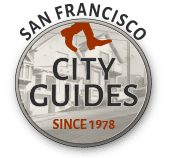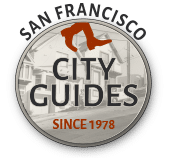San Francisco Tour Tales
Coffee Roasters of San Francisco
Coffee is one of the most exported commodities in the world. It originated in Yemen and by the 1400s trading brought it to Africa, Arabia, and the Mediterranean.
After achieving popularity in Europe in the 1600s, “the Wine of Araby” traveled to America, where by the end of that century it overtook beer as the favorite breakfast drink. During the Mexican- American War in 1846, it was a ration for soldiers.
Traders spread coffee to other hot climate growing areas, including the East and West Indies. And just like the Gold Rush immigrants traveling to California, green coffee beans also came by ship. San Francisco became a center for coffee roasting businesses, with coffee a main part of the City’s economy.
William Bovee, who had a coffee roasting business in New York, decided to join the Gold Rush in 1849 after his business was destroyed by a fire. He joined a group of men in a claim, but lost money when others in the group gambled it away. Back in San Francisco, noticing that there were no coffee businesses, he decided to build a coffee mill. His Pioneer Steam Coffee and Spice Mill, built in 1850, was located on Powell between Broadway and Pacific. His hand-ground coffee became so popular he could not keep up with the demand, and for awhile tried using a windmill on Telegraph Hill for power…unsuccessfully.
In 1960, the year when these bags of coffee are shown being unloaded at the Embarcadero, 110,000 tons of coffee arrived in SF for local processing.
Some accounts say Bovee hired James Folger as a carpenter, others say bookkeeper. Folger was a descendant of a Massachusetts Bay Colony family that arrived in the colonies in 1635. Another descendant, Abiah Folger, was the mother of founding father Ben Franklin, and the family was mentioned in Herman Melville’s book Moby Dick as Nantucket whalers. However, with the whaling industry dying out, James Folger’s family decided to join the Gold Rush in 1849.
His brothers went directly to the gold country, while James, age 14, was designated as the family member to stay in San Francisco to find a real job. After working for Bovee, he began selling coffee in the mining towns, and made more money than his brothers. James and a partner bought out Bovee. For a period August Schilling, later of spice fame, was a partner. James died in his early fifties of a heart attack, and his son James, 26, took the helm. One of his premium brands was named Golden Gate Coffee with a picture of a Gold Rush sailing ship in the San Francisco Bay (sans the Golden Gate Bridge).
*********************
The father of Austin Herbert and Reuben Wilmarth Hills was looking for gold in 1863, long past the time mining was profitable. But he still decided to move his family from the East Coast to San Francisco ten years later. The brothers, who preferred the monikers A.H. and R.W., in 1875 operated a stall selling dairy foods in the Bay City Market, located where the United Nations Plaza is now. A few years later they purchased Arabian 1900, they were using this method for packaging their coffee.
In 1897 R.W. suggested to an artist that he create a trademark for their Arabian Roast Coffee brand, resulting in what became the famous bearded man in robes and a turban. Even at this time their coffee was from Brazil and Central American—not the Middle East.
*********************
In 1899, Max Brandenstein, the son of a Gold Rush immigrant who came to San Francisco at 17 to escape the German military draft, founded a coffee and spice import business called the M.J. Brandenstein Company. After brothers Mannie, Eddie, and Charlie joined the company, the name was changed to MJB Coffee so as not to offend any brother. Their first coffee brand, named Climax, was advertised with a woman reclining in bed, smiling and sipping a cup of coffee.
Mannie launched a marketing campaign in 1910 with the slogan “MJB Coffee Why?” It began with promotional fans given to people attending a boxing match in Reno, Nevada; later signs were painted all over San Francisco. Mannie’s daughter later revealed the meaning of “Why?”– Mannie said it had no meaning, he just wanted people asking about MJB.
A family rift threatened to destroy the company when Mannie, Eddie, and Charlie changed their name to Bransten because of anti-German sentiment during WW I. This angered Max, but they all reunited after the war.
*********************
The 1906 Earthquake and Fire destroyed the coffee roasters’ area in San Francisco’s lower Market Street and South of Market Street area.
While selling butter preserved in brine to the Army during the Spanish American War, the Hills Brothers were unhappy with the unpleasant aftertaste. R.W. borrowed a vacuum packing technique from a Chicago coffee distributor to use instead. By The Folger Building survived and was used by the Marines in post earthquake recovery.
Hills Brothers built a new factory in 1926 using famed architect George Kelham (chief of architecture of the PPIE). After the labor strike in 1934, the company wanted to make the building more secure. Kelham, fearing the building would resemble a prison, designed intricate bronze work for the doors that can still be seen today.
The Hills Brothers building on Harrison and Embarcadero is now used for offices, retail, and condominiums.
All three companies were continuously family owned until the latter half of the 20th century. Hills Brothers was purchased by Proctor and Gamble in 1962 and then by Nestle, which later bought MJB Coffee. Folger’s was sold to Proctor and Gamble in 1963, and recently to the J.M. Smucker Co. Production for all the companies was moved out of San Francisco by the early 1990s.
Sources
Coffee: A Dark History, Antony Wild
The Folger Way, Ruth Waldo Newhall Uncommon Grounds, Mark Pendergrast
Under Mannie’s Hat, Ruth Bransten McDougall Files in the SFPL History Center







